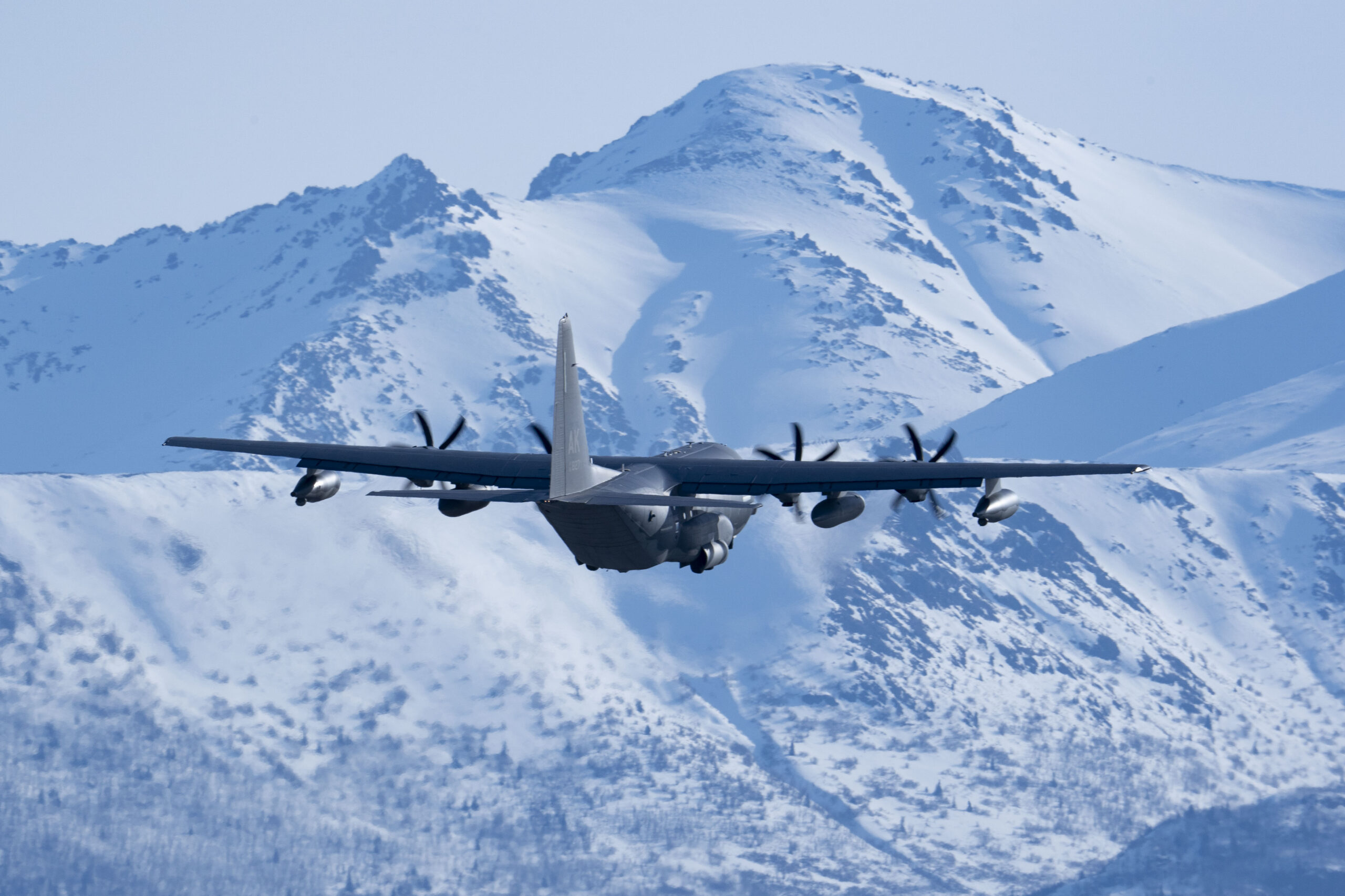Civilization
Alaska’s Strategic Importance to U.S. Security

From grave deficiencies in strategic lift and defense industrial base to submarine repair inadequacies, Yorktown Institute continues to highlight shortfalls in the enabling elements on which the continued global supremacy of the U.S. military depends. This article is another in that series.
Pay attention to Alaska
China’s pressure on Taiwan and Russia’s assault on Ukraine demonstrate the deterioration of the Eurasian security. In turn, Congress and the military have at least recognized the implications of the threats the U.S. faces. But budgetary constraints, Congressional gridlock, and a poor sense of precise threat have limited America’s ability to build up its military forces and confront its enemies. It is thus crucial to invest in the long-term enabling capabilities that ensure U.S. strategic superiority. A real Alaskan communications network that circumvallated the state and connected to its outlying islands in the Bering Strait and Northern Pacific, would enhance deterrence in the long run at only limited cost.
Despite over two years of war in Ukraine, the threat from Russia has not diminished. In some respects, it has grown, particularly in the Indo-Pacific. The Russian Army may have been savaged in Ukraine and will be largely incapable of matching NATO forces for the coming half-decade at least, if not longer. But the Russian air force and navy maintain robust conventional and nuclear strike capabilities.
Russia and China both highlight the importance of Alaska
Of notable relevance – as American strategists understood in the Cold War – is Russia’s nuclear submarine bastion in the northern Pacific’s Sea of Okhotsk. Russian submarines secure Moscow’s second-strike from here, supported by heavy bombers. Russia has also conducted several naval exercises in the Arctic and Bering Strait, including last autumn, when Russian warships conducted missile tests near the U.S.-Russia maritime boundary line. With a new European Cold War threatening to turn hot, Alaskan territorial defense is now more critical than at any time since the 1980s.
The China challenge, moreover, increases the strategic importance of Alaska to U.S. policy. While Beijing is unlikely to assault Taiwan soon, owing to a combination of military unpreparedness, economic disruption, and a broader pressure strategy against the island-republic, a confrontation between China and the U.S. over the Indo-Pacific’s future is nearly guaranteed in the next decade. China may prefer to absorb Taiwan absent a full-scale war with the U.S., but if it begins to apply pressure to Taiwan, it will be willing to climb the escalation ladder to major combat, particularly since – unlike the Soviets in 1962 – China has a chance to win a war with the U.S.. In turn, during any major conflict, critical U.S. bases will be on the Chinese target list, namely Okinawa, Yokosuka, and Guam, and perhaps even Pearl Harbor. By destroying U.S. regional logistical infrastructure, China can buy the time it needs to overwhelm Taiwan, and even pressure Japan and the Philippines into submission.
Bases and depot crucisl in World War II
The only other way to sustain U.S. forces in the Indo-Pacific is through Alaskan bases and depots. They were crucial during the Second World War’s early days, when Imperial Japan captured part of the Aleutian Islands to secure the Japanese Navy’s northern flank, delay U.S. counterattacks, and prevent an expected U.S.-Soviet joint attack from the Kuril Islands. Since this point, the U.S. has maintained significant Alaskan military infrastructure, including Elmendorf and Eielson Air Force Bases. Historically speaking, the U.S. Navy maintained air bases in the Aleutians, most critically Dutch Harbor, which could be used for patrol and reconnaissance during wartime.
U.S. policy has a nominal focus on the High North – including the White House’s National Arctic Strategy, the Pentagon’s Arctic Policy, the Navy’s Strategic Outlook for the Arctic, the Army’s Arctic Strategy, and the Air Force’s Arctic Strategy. Indeed, this focus has existed since the Trump administration, and has continued in the Biden administration despite their obvious strategic distinctions. In turn, the Department of Homeland Security and multiple members of the intelligence community have an obvious interest in the High North. Because Alaska is the only part of the United States with physical territory in the High North, robust infrastructure in Alaska should be a clear policy priority.
Early movement
There has been some movement on actual material improvements to the U.S.’ strategic position in Alaska. As of early 2024, all services have adopted some form of “Arctic Pay,” covering equipment purchases and often increasing salaries given the harsh conditions of the Alaskan environment. The U.S. military has begun to prepare to expand the Port of Nome – the U.S. Army Corps of Engineers has a nearly $550 million budget for the project. Late last year, Congress also approved $200 million of funding for military installations in Alaska.
However, none of these cover the basic connectivity and communications improvements that are needed to establish situational awareness and leverage Alaska’s geography for strategic benefit. A large-scale communications system that connects Alaska’s outlying islands and locations along the coast together could immediately be leveraged to create a variety of surveillance sites—including much needed acoustic sensing capacity for the U.S. Navy and Coast Guard—that can be expanded in wartime.
Not a civilian responsibility
The Pentagon and Services are largely unwilling to fund these, seeing them as a civilian responsibility, despite the fact that locations like St Lawrence Island, under 100 kilometres from Russia’s Chukchi Peninsula, are obvious areas for military forward deployment. However, the scale of a simple communications cable project – which would cost around $50 million – is beyond that of the State government and other relevant Federal agencies, both because of the cost involved and the need to coordinate development across multiple departments. Additionally, the Pentagon shies away from concluding contracts directly with individual medium-sized vendors that could actually do the job of communications infrastructure development.
The solution is for Congress to mandate in the next NDAA a major communications infrastructure project with a short timeline – ideally completed within two years – and absent spools of red tape. Combined with short-term federal investment in civilian networks that could be installed in such locations as St. Lawrence Island, DoD could leverage its increased connectivity the better to patrol the Arctic and protect the U.S. homeland. The only way to ensure the U.S. military has a competitive advantage in the High North, and leverages Alaska properly, is through construction of these enablers.
This article was originally published by RealClearDefense and made available via RealClearWire.
Seth Cropsey is president of Yorktown Institute. He served as a naval officer and as deputy Undersecretary of the Navy and is the author of Mayday and Seablindness.
-

 Civilization1 day ago
Civilization1 day agoDC Pipe Bomb Arrest Raises Questions About Christopher’s Wray’s FBI
-

 Executive4 days ago
Executive4 days agoThe Last Supper: New York’s Socialist Feast
-

 Civilization4 days ago
Civilization4 days agoYoo Hoo, VP Vance—Your Character is Showing!
-

 Guest Columns3 days ago
Guest Columns3 days agoCongressional Leaders See Far Higher Stock Returns Than Peers
-

 Civilization2 days ago
Civilization2 days agoThe Legal Logic Behind U.S. Operations Against Narco-Terrorist Networks
-

 Civilization4 days ago
Civilization4 days agoFacing Facts & Rolling Back Mythologies: The New National Security Strategy
-

 Civilization3 days ago
Civilization3 days agoHow Trump Changed America
-

 Civilization5 days ago
Civilization5 days agoWaste of the Day: Senators Earmarked Cash for Their Former Schools










